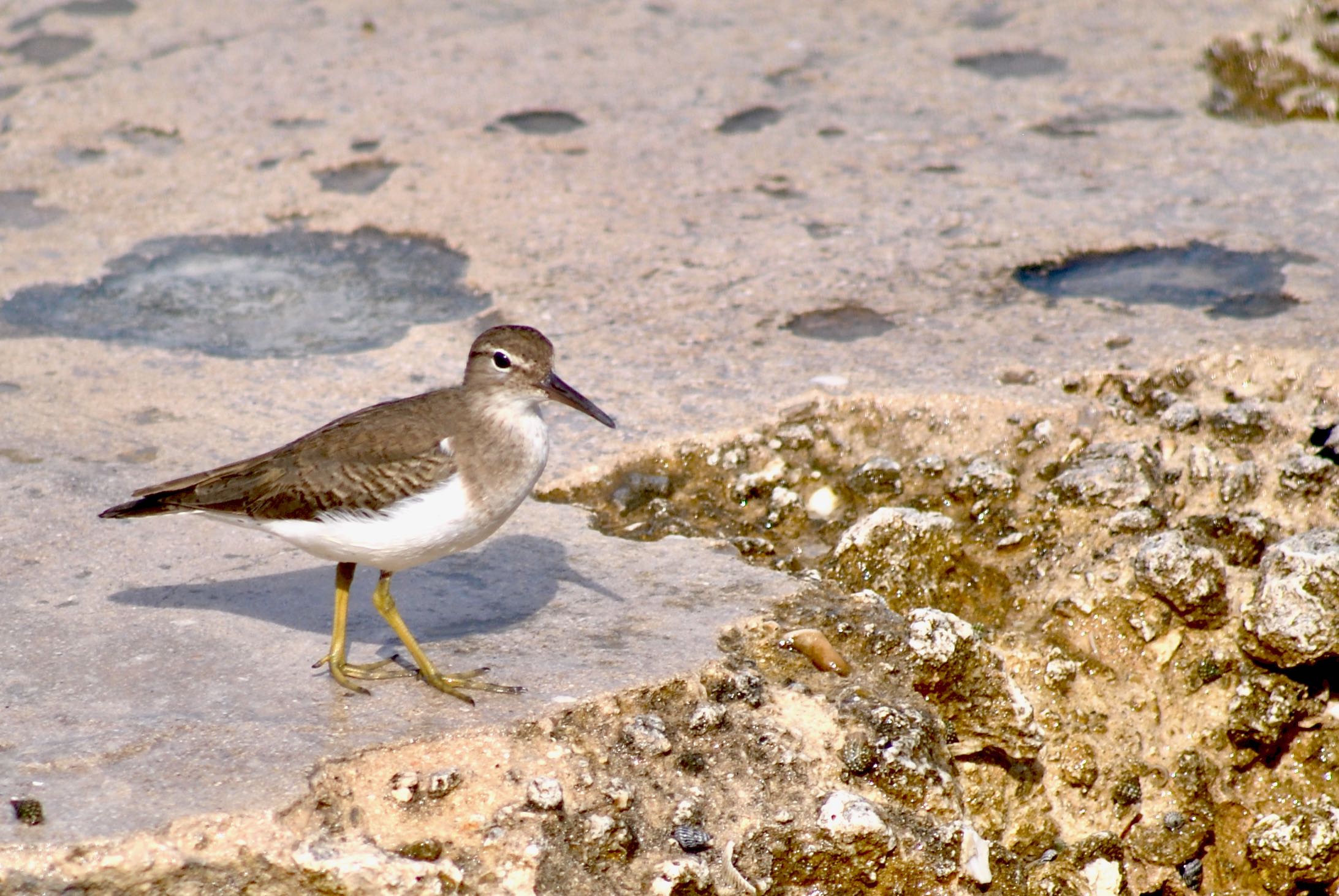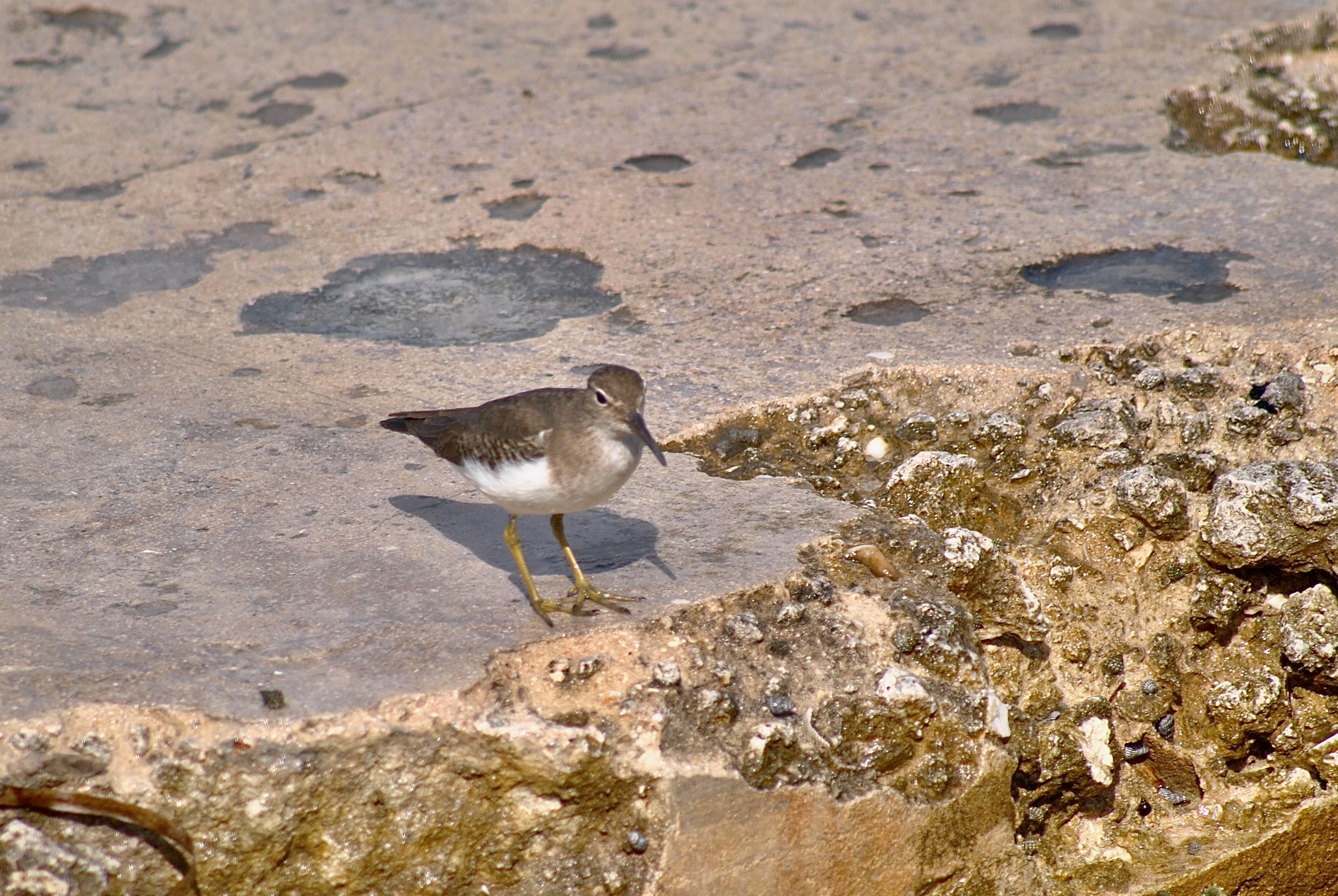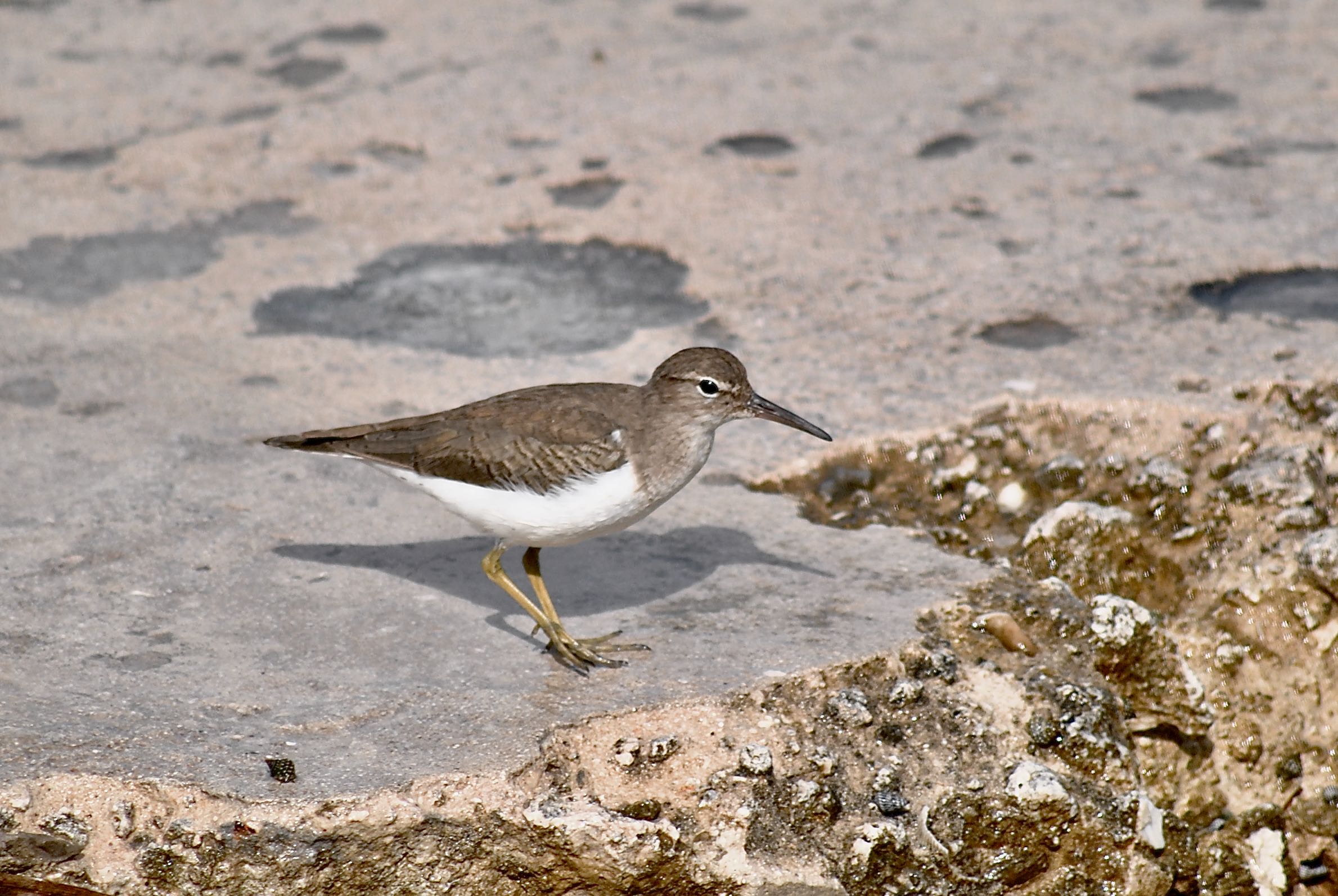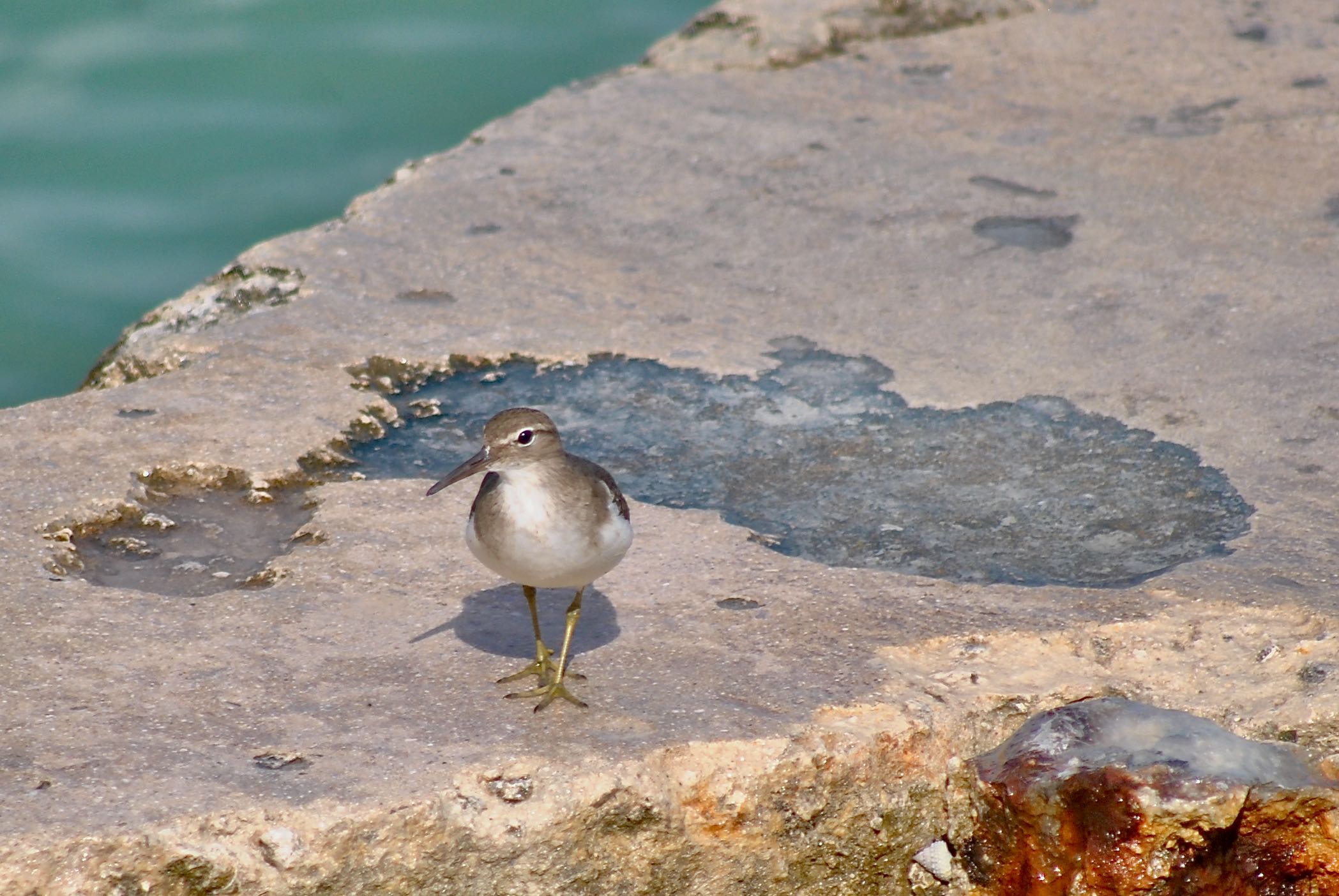
Red knot, photographed at Bahia Honda State Park, Monroe County, in December 2013.
In summer, the red knot, Calidris Canutus, is so red that it practically shouts its name. In winter, when we're likely to encounter them, it becomes distinctively indistinctive, almost generic in its looks.
Regardless of its varied looks, it's one amazing bird that makes a twice-yearly commute from the top of the globe to the bottom, a trip of 9,300 miles one way. It's also a bird in trouble largely because our appetite for horseshoe crabs conflicts with theirs. We will explain.
Red knots spend their summers in the far, far north. So far north that the first known red knot nest was discovered on Admiral Peary's 1909 exedition to the North Pole. Come fall, they head south to both the Pacific and Atlantic coasts, where they'll feed along tidal flats. Some drop out and winter in place; some continue the journey as far south as Tierra del Fuego in extreme southern Argentina.
Delaware Bay has been a crucial feeding ground for these birds. Thousands of red knots will stop there and feast on the eggs of the horseshoe crab. We humans don't eat horseshoe crabs, nor their eggs, but we do harvest their blood. Turns out their blood is extraordinarly sensitive to bacteria, which makes it useful in testing the sterility of medical devices and vaccines. We don't kill the crabs that we collect, at least not intentionally, but individuals that have been had their blood harvested generally are less vital than their counterparts that haven't been tapped and reproduce at lower rates. That means fewer eggs for the red knot population that relies on them to fuel their long-distance migration.
By one estimate, the number of red knots has fallen from about 100,000 to less than 30,000. According to the same source, surveys done along a stretch of Florida's southwest Gulf Coast found between 7,000 and 10,000 birds during the 1990s; the same survey done in 2006 found only 2,100, and in 2008 only 515. By 2014, the feds put the Rufa subspecies of red knots on endangered species list.
Red knots are plump sandpipers, distinctively rusty red, males more than females, from the head through the neck, breast and belly. The flanks and back are mottled but tinged with the same rusty red. They have a dark, stout bill, and a prominent stripe above each eye. They're large as sandpipers go, between nine and 11 inches long and a wingspan that reaches 22. In winter, the red disappears; males and females take on the same dull look.
In summer, red knots breed in the Arctic tundra in places that are dry and often barren. They begin to arrive in June, sometimes when there's still snow on the ground. When conditions are right, they dig a small scrape in the ground for a nest and line it with lichens, moss and leaves. Clutches are generally four eggs, which take about three weeks to hatch. Both parents share sitting duties. Mom splits the scene shortly after the eggs hatch, leaving Dad to care for the brood until they're able to fledge. The young knots are able to feed themselves, however. Soon after Dad leaves, the juveniles will join the great southward migration. Red knots are believed to breed at two years; their lifespan is about seven. Insects, particularly flies, are the mainstay of the red knot's summer diet. During migration, they'll gather in staging areas, places that offer habitat and plenty of food, including mollusks, sea worms, bug larvae and crustaceans are also on their menu. In spring, Delaware Bay serves as a staging area, and horseshoe crab eggs are on the menu.
Red knots are members of Scolopacidae, the sandpiper family
Click on photo for larger image
Links for Red Knot



